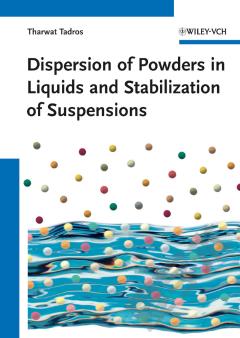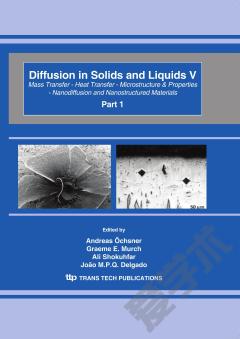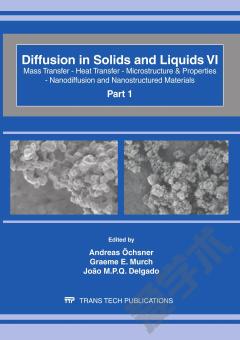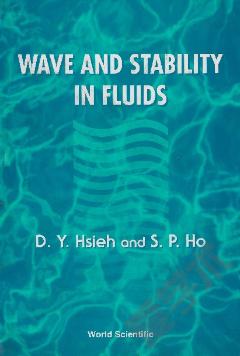Dispersion of Powders —— in Liquids and Stabilization of Suspensions
----- 液体与稳定化悬浮液的粉体分散
Preface GENERAL INTRODUCTION Fundamental Knowledge Required for Successful Dispersions of Powders into Liquids Particle Dimensions in Suspensions Concentration Range of Suspensions Outline of the Book FUNDAMENTALS OF WETTING AND SPREADING Introduction The Concept of the Contact Angle Adhesion Tension Work of Adhesion Wa Work of Cohesion Calculation of Surface Tension and Contact Angle The Spreading of Liquids on Surfaces Contact Angle Hysteresis THE CRITICAL SURFACE TENSION OF WETTING AND THE ROLE OF SURFACTANTS IN POWDER WETTING The Critical Surface Tension of Wetting Theoretical Basis of the Critical Surface Tension Effect of Surfactant Adsorption Dynamic Processes of Adsorption and Wetting Wetting of Powders by Liquids STRUCTURE OF THE SOLID-LIQUID INTERFACE AND ELECTROSTATIC STABILIZATION Structure of the Solid-Liquid Interface Structure of the Electrical Double Layer Distinction between Specific and Nonspecific Adsorbed Ions Electrical Double-Layer Repulsion van der Waals Attraction Total Energy of Interaction Flocculation of Suspensions Criteria for Stabilization of Dispersions with Double-Layer Interaction ELECTROKINETIC PHENOMENA AND ZETA POTENTIAL Stern-Grahame Model of the Double Layer Calculation of Zeta Potential from Particle Mobility Measurement of Electrophoretic Mobility and Zeta Potential Electroacoustic Methods GENERAL CLASSIFICATION OF DISPERSING AGENTS AND ADSORPTION OF SURFACTANTS AT THE SOLID/LIQUID INTERFACE Classification of Dispersing Agents ADSORPTION AND CONFORMATION OF POLYMERIC SURFACTANTS AT THE SOLID-LIQUID INTERFACE Theories of Polymer Adsorption Experimental Techniques for Studying Polymeric Adsorption Measurement of the Adsorption Isotherm Measurement of the Fraction of Segments p Determination of the Segment Density Distribution p(z) and Adsorbed Layer Thickness delta h Examples of the Adsorption Isotherms of Nonionic Polymeric Surfactants Adsorbed Layer Thickness Results Kinetics of Polymer Adsorption STABILIZATION AND DESTABILIZATION OF SUSPENSIONS USING POLYMERIC SURFACTANTS AND THE THEORY OF STERIC STABILIZATION Introduction Interaction between Particles Containing Adsorbed Polymeric Surfactant Layers (Steric Stabilization) Flocculation of Sterically Stabilized Dispersions Bridging Flocculation by Polymers and Polyelectrolytes Examples for Suspension Stabilization Using Polymeric Surfactants Polymeric Surfactants for Stabilization of Preformed Latex Dispersions PROPERTIES OF CONCENTRATED SUSPENSIONS Interparticle Interactions and Their Combination Definition of "Dilute", "Concentrated", and "Solid" Suspensions States of Suspension on Standing SEDIMENTATION OF SUSPENSIONS AND PREVENTION OF FORMATION OF DILATANT SEDIMENTS Sedimentation Rate of Suspensions Prevention of Sedimentation and Formation of Dilatant Sediments CHARACTERIZATION OF SUSPENSIONS AND ASSESSMENT OF THEIR STABILITY Introduction Assessment of the Structure of the Solid/Liquid Interface Assessment of Sedimentation of Suspensions Assessment of Flocculation and Ostwald Ripening (Crystal Growth) Scattering Techniques Measurement of Rate of Flocculation Measurement of Incipient Flocculation Measurement of Crystal Growth (Ostwald Ripening) Bulk Properties of Suspensions: Equilibrium Sediment Volume (or Height) and Redispersion RHEOLOGICAL TECHNIQUES FOR ASSESSMENT OF STABILITY OF SUSPENSIONS Introduction Steady-State Measurements Constant Stress (Creep) Measurements Dynamic (Oscillatory) Measurements RHEOLOGY OF CONCENTRATED SUSPENSIONS Introduction
{{comment.content}}








 京公网安备 11010802027623号
京公网安备 11010802027623号